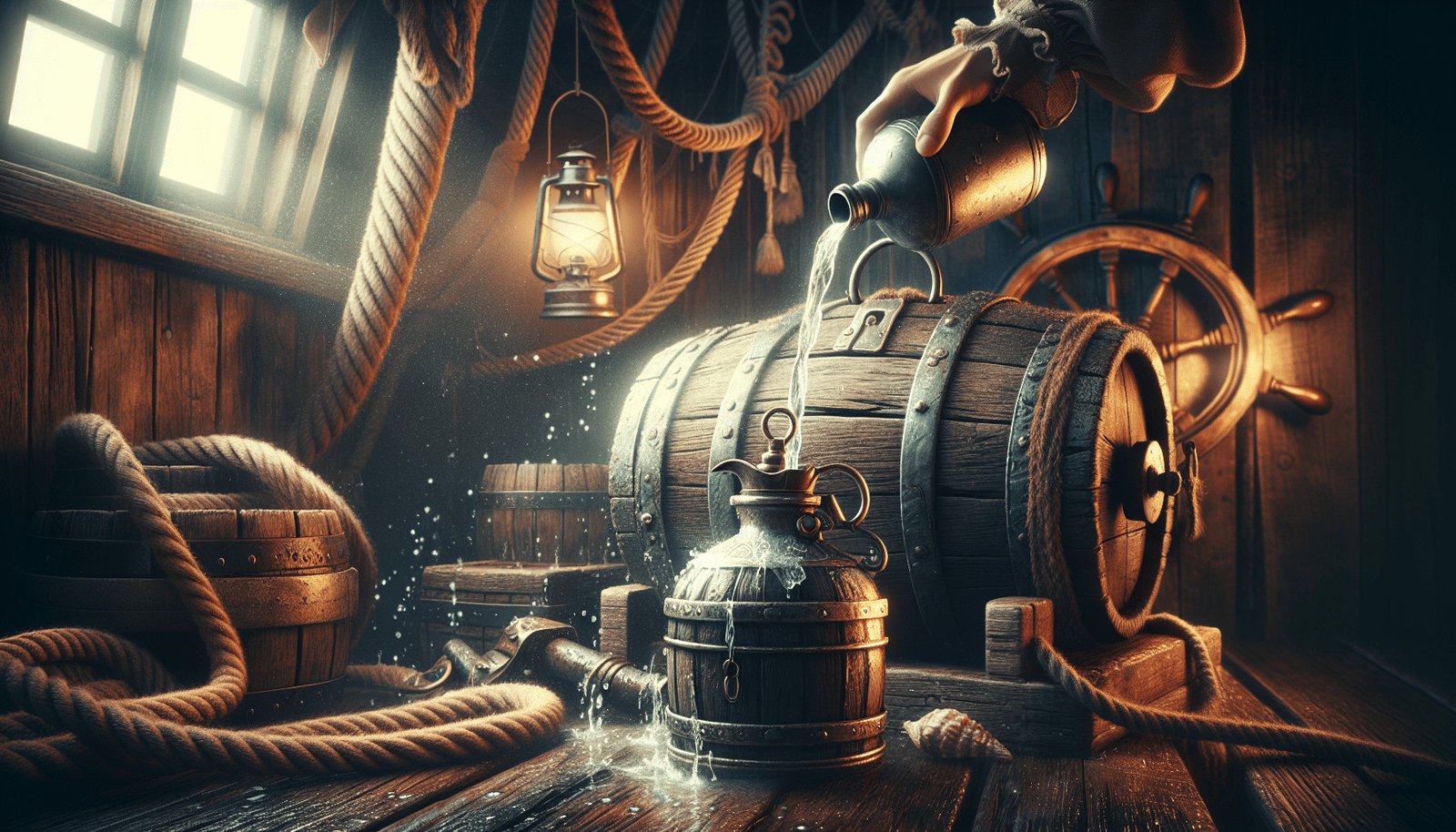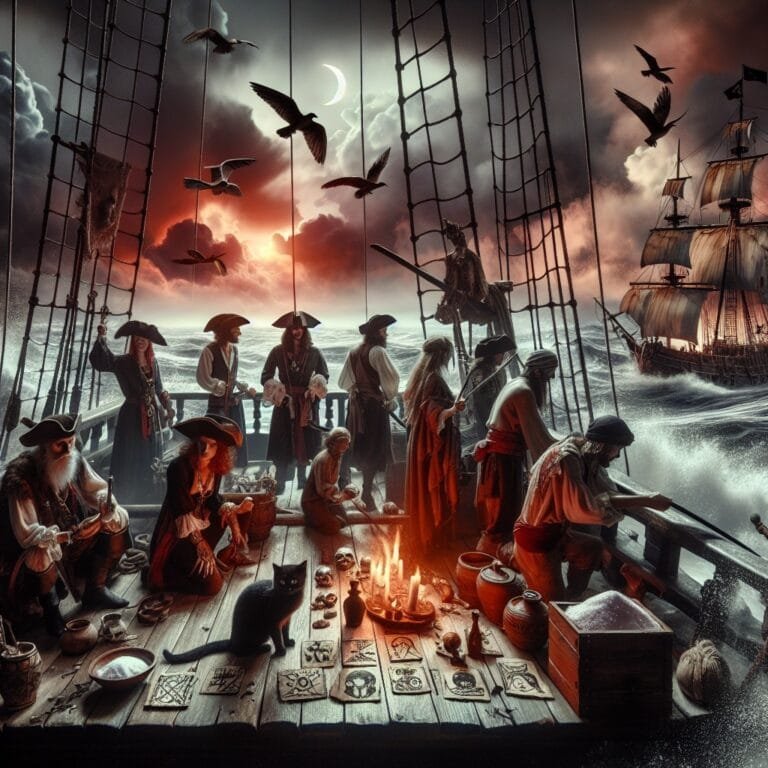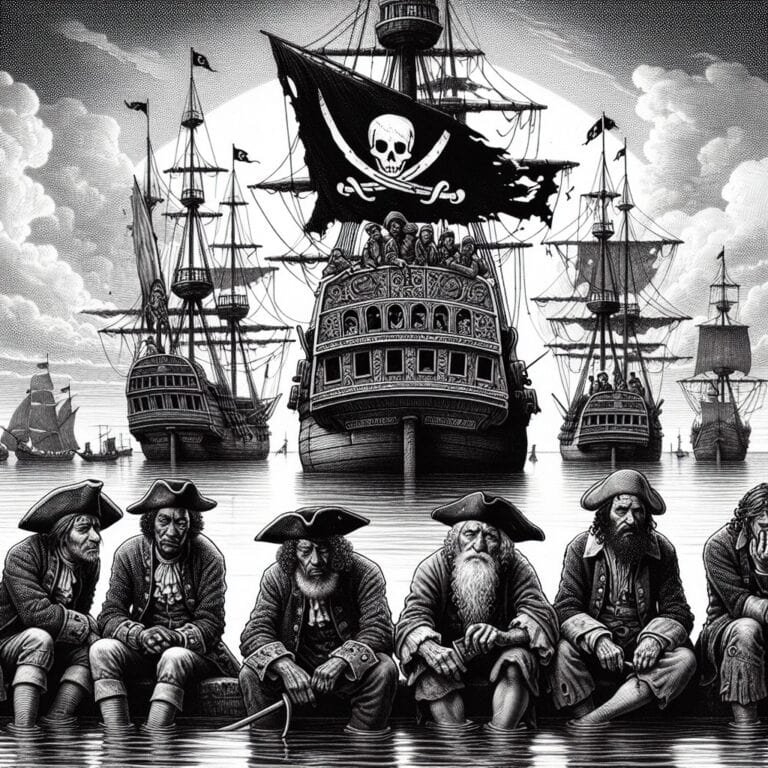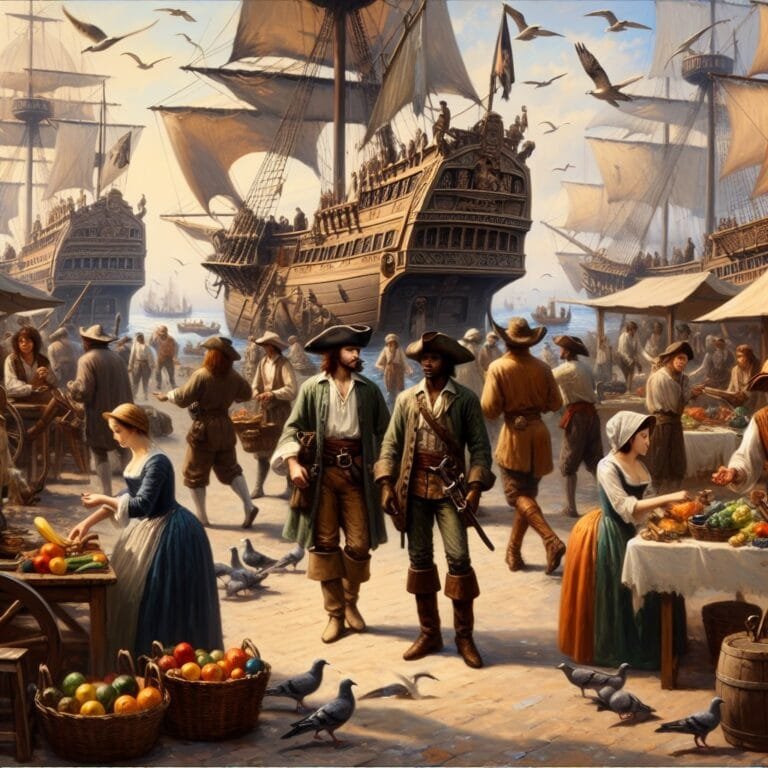Ever wondered how pirates managed to stay hydrated while out on the open sea, raiding ships and causing mayhem?
Introduction: Ahoy, Thirsty Matey!
Being a pirate is tough work. Long days on the sea, the constant pressure of not getting caught, and the occasional sword fight can really work up a thirst. But let me tell you, managing fresh water on a pirate ship is no small feat; it’s like trying to keep a parrot from swearing in front of your grandmother. Difficult, smelly, and somehow hilarious. So, grab your imaginary eyepatches, and let’s jump into the wonderfully absurd world of pirate hydration.
The Fresh Water Dilemma: Much Ado About Thirst
Why Was Fresh Water So Hard to Come By?
Picture this: you’re a pirate. You’ve got treasure to plunder, and people to terrify, but you’re stuck worrying about water? Welcome to one of history’s oddest balancing acts. Pirates had to ensure they didn’t keel over from dehydration before even catching sight of the enemy.
Sources of Fresh Water
Here’s the kicker-fresh water sources weren’t exactly lining up to hop on board a pirate ship. Pirates relied on:
- Rivers and Streams: The go-to, if you were near land. Pirates would fill their barrels with water from rivers or streams, but this often tasted like a dirty sneaker because of algae and river animals.
- Rainwater: Pirates were the original rainwater harvesters. They used sails or tarpaulins to direct rainwater into barrels.
- Captured Ships: Like finding a dollar in your pocket. Sometimes, the spoils of a raid included barrels of fresh water from unsuspecting merchants.
The Storage Conundrum: Keeping It Fresh and Funk-Free
Alright, so you’ve got your water. Now what? Storing it was where things got really dicey.
Storage Methods
The main options were:
- Wooden Barrels: Ah yes, nothing like the taste of mildew and wood to quench your thirst. Barrels were the most common, but they were also prime breeding grounds for algae and bacteria.
- Casks with Metal Linings: Fancy, right? These were top-notch by pirate standards but rarer.
- Captured Competitors: Sometimes, pirates stole more than gold. Grabbing better storage systems from captured ships was a prime move.

Thirsty Work: Shipboard Life and Water Rationing
Water for the Crew
Life on a pirate ship made Survivor look like a luxury resort. The crew needed water for basic tasks-we’re talking hydration, cooking, and the occasional makeshift shower, which was basically a splash and dash. Your average pirate wasn’t getting eight cups a day-thanks, survival guidelines. Instead, they operated on a form of water rationing that would make your strictest diet look like a cheat day.
Daily Rations
Let’s break it down in raw numbers and half-hearted jokes:
| Task | Amount | Comment |
|---|---|---|
| Drinking | 1-2 pints/day | Barely enough to make you feel human |
| Cooking | A few pints/day | Would be tastier to chew on your own arm |
| Hygiene | 1-2 pints/week | Pirates smelled rank for a reason, folks |
And you thought waiting for your Amazon package to arrive was tough.
Water Wars: The Extra Burden of Pirate Life
Raiding for Water
Picture this: you’re busy hunting treasure when you suddenly find your ship’s water levels dropping faster than your bank account on rent day. Now you’re forced into “water raids.” In other words, pirates had to take what they could get, often raiding other ships solely to restock on water. It’s like going grocery shopping at your neighbor’s house-without an invitation.
The Impact on Health
Hydration, or the lack thereof, could turn your favorite pirate into a bedridden mess quicker than a tavern wench could say “Yo-ho-ho.” Common issues included:
- Dehydration: Couldn’t exactly roll through with a Gatorade cooler.
- Scurvy: Lack of fresh food and water meant vitamin C was rarer than a sailor without tattoos.
These problems only amplified the already harsh conditions, making it even more miraculous that pirates managed to keep their morale-or their teeth- intact.

Swabbing the Deck: Keeping Things Cleanish
Hygiene Practices
Pirates weren’t exactly germaphobes. Cleanliness didn’t even make it to the list of priorities, which is just as well, given the limited water supply. Here are some hygiene practices-or lack thereof:
- Minimal Baths: Essentially non-existent. If you think a teenage boy’s room is bad, think again.
- Scrubbing Decks: Occasionally happened, usually after heavy rains when extra water was available.
- Laundry: Forget about it. Your clothes would likely rot off before you had a chance to wash them.
Canteens and Personalized Water Routines
Personal Water Storage
Each pirate had their own methods to ensure they had water when they needed it. Yes, even in the chaotic lifestyle of raiding and pillaging, there were moments for personal water rituals:
- Leather Canteens: The genuine, old-school swag.
- Flasks: Ideal for liquor but worked in a pinch for water too.
Anecdotes from Real Pirates
Some pirates even developed peculiar habits. For example:
- Blackbeard: Rumor has it he mixed gunpowder into his drink to keep things “exciting.” Not sure how well that worked for hydration.
- Anne Bonny: A fierce pirate notoriously known for stashing extra water in hidden compartments on the ship.
Conclusion: The Quenching Quest and the Thirsty Legacy
So, there you have it-the hilarious, grim, and breathtakingly weird saga of water management on pirate ships. The ingenuity, paired with sheer desperate need, transformed every pirate and their wooden tub into tiny, floating Mad Max scenarios. Perhaps you won’t complain about your tap water being “too tasteless” anymore, eh? So raise a glass (of clean water, preferably) and toast to the brave, parched souls who managed the ultimate balancing act of piracy and hydration. Arr!
Thanks for sticking around. Now, go hydrate or something.








